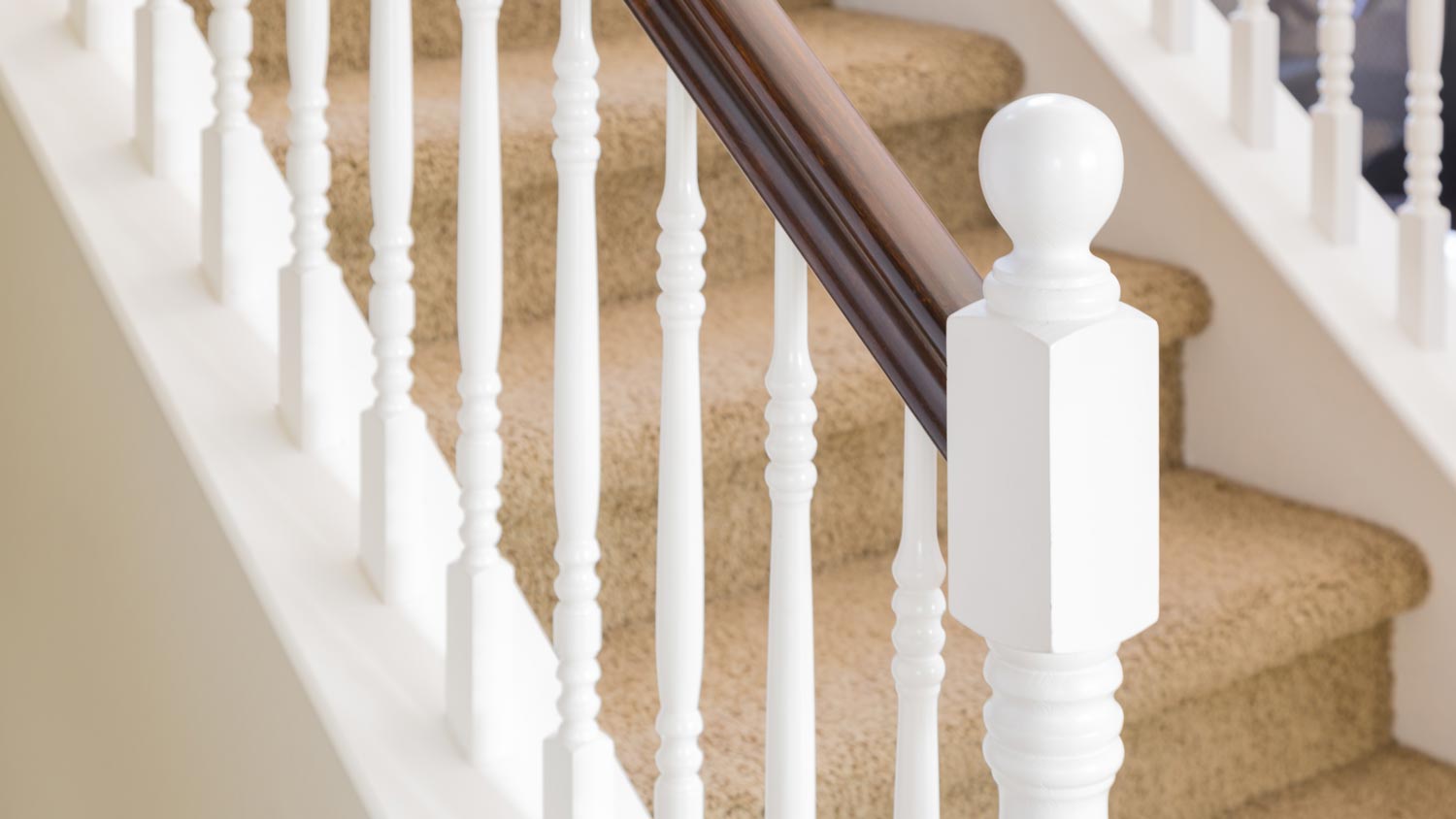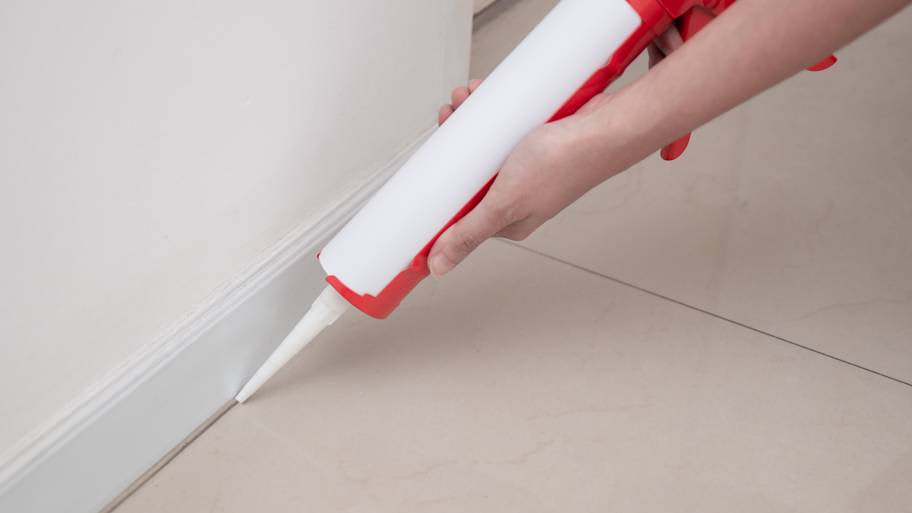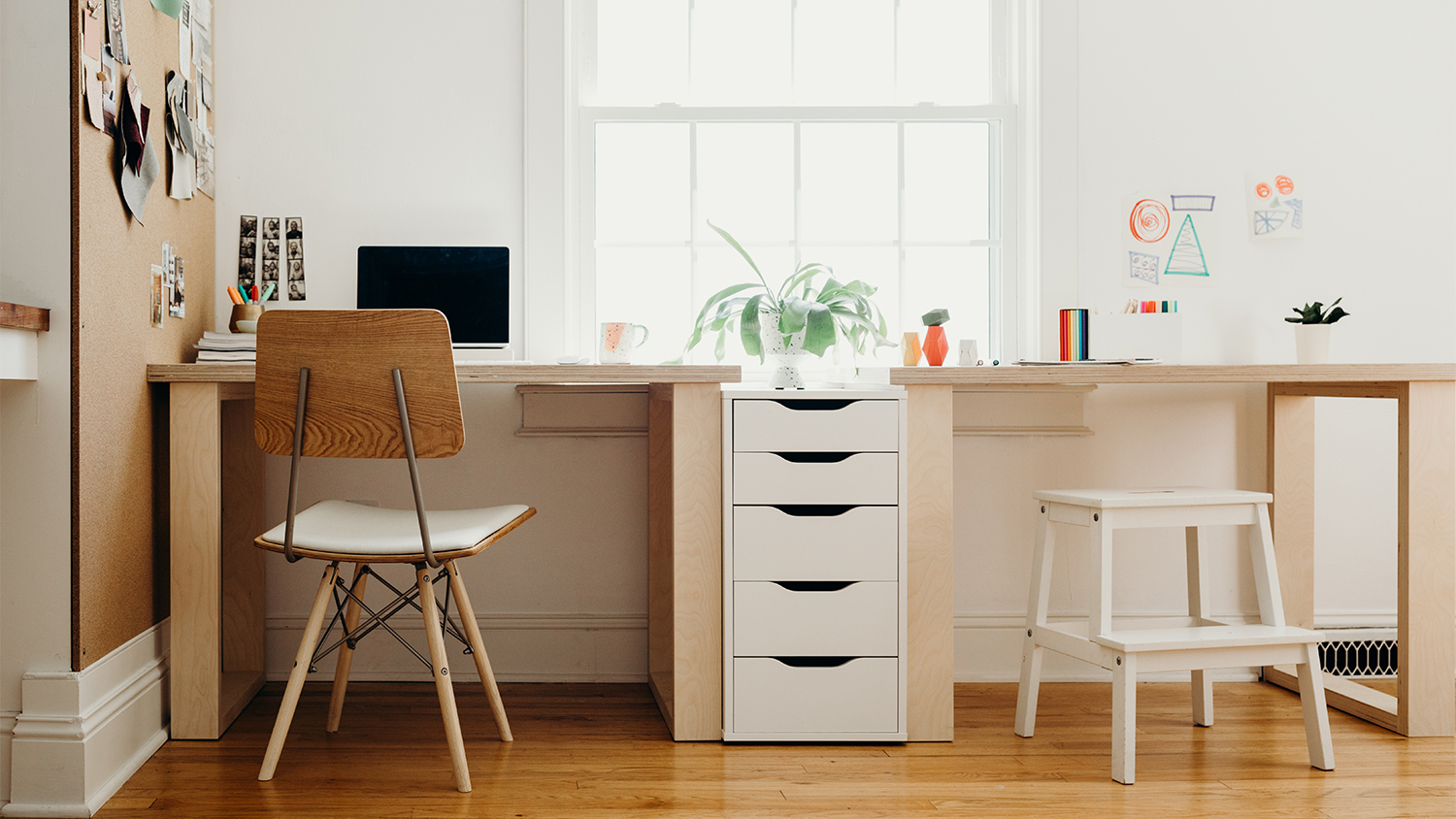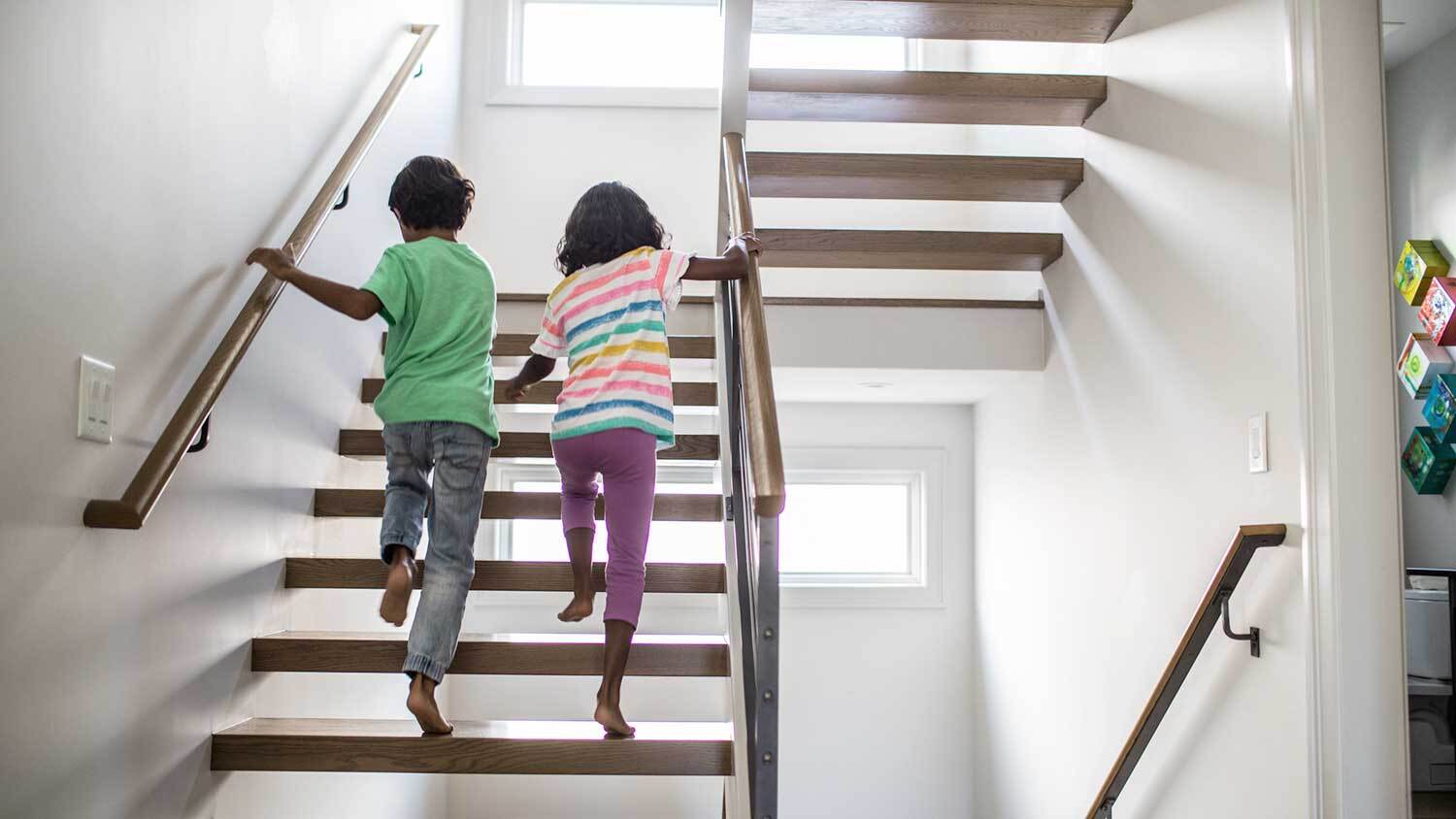
Get expert insights on stair railing repair cost, including average prices, cost factors, and tips to save money. Plan your stair railing repair project with confidence.
Here’s how to hide gaps for good


While DIYers can fill small gaps between floors and baseboards, if your baseboards are worn out or the gaps are more than an inch wide, you may need a pro’s help to replace the trim.
If the gaps are a result of significant home settling, you may need to bring in an expert for a structural assessment.
A baseboard installation pro can identify the cause, fix the gaps, and take steps to prevent them from coming back.
Gaps between your floor and baseboards are more than just an eyesore—they're an open invitation for dust, debris, and even pests to gather in hard-to-reach places. Whether you're dealing with settling in new construction, flooring installation issues, or seasonal wood movement, these unsightly spaces can make even the tidiest room look unfinished. Learn how to fill the gap between your floor and baseboard, which is a straightforward DIY project that can dramatically improve your home's appearance and cleanliness.
Understanding why gaps appear between your floor and baseboards can help you choose the most effective repair method and prevent future issues. Several common causes create these unwanted spaces in your home:
House settling represents the most frequent culprit, especially in newer construction. As your home's foundation adjusts to soil conditions and seasonal changes, the walls can shift slightly, pulling the baseboards away from the flooring. This typically occurs within the first few years after construction.
Improper flooring installation often leaves gaps when contractors don't account for baseboard positioning during installation. Pros should maintain consistent spacing, but DIY installations or rushed professional work sometimes result in uneven gaps along the wall's length.
Seasonal wood movement affects both hardwood floors and wooden baseboards as humidity levels fluctuate throughout the year. Wood expands during humid summer months and contracts in dry winter conditions, creating varying gap sizes depending on the season.
Baseboard installation issues can leave gaps when trim pieces aren't properly fitted to uneven floors. Old homes with settling floors or walls that aren't perfectly straight often present challenges during baseboard installation.
The best time to fill gaps is when you’re about to tackle touch-ups or painting, as most filling methods require painting or staining to match existing trim work. However, not every gap requires immediate attention, but certain situations make repair a priority for both aesthetic and practical reasons.
Gaps larger than 1/4 inch should be addressed promptly, as they collect significant dust and debris while allowing air infiltration that can impact energy efficiency. These larger spaces also provide hiding spots for insects and small pests.
Visible gaps in high-traffic areas such as living rooms, dining rooms, and main hallways create an unfinished appearance that you’ll notice (and find annoying) every time you pass by.
Gaps that trap dirt and debris require attention regardless of size, especially in homes with pets or children. Areas near entryways or kitchen spaces accumulate grime quickly in unsealed gaps.

The best method for filling gaps depends on the size of the gap, your skill level, and the desired aesthetic outcome. Each technique offers specific advantages for different situations.
Paintable latex caulk provides the most versatile solution for gaps up to 1/2 inch wide, creating a smooth, professional-looking finish that can be painted to match your baseboards.
Materials needed:
Paintable latex or latex-silicone caulk
Caulking gun
Painter's tape
Putty knife or smoothing tool
Primer and paint to match baseboards
To caulk your baseboards, apply painter's tape along the floor edge to protect the flooring. Load your caulking gun and apply steady pressure while moving along the gap, maintaining a consistent bead size. Use a putty knife or your finger to smooth the caulk flush with the baseboard face, creating a seamless transition.
Remove the tape immediately after smoothing while the caulk remains wet. Allow the caulk to dry completely before priming and painting your baseboards, ensuring the caulk blends seamlessly.
Flexible trim strips provide an easy solution for irregular gaps that traditional methods can't address effectively.
Materials needed:
Flexible trim strips
Utility knife
Measuring tape
Adhesive (if required by manufacturer)
These modern products conform to uneven surfaces and varying gap sizes along a single wall. Simply measure, cut to length, and press into place. Most flexible strips feature adhesive backing for easy installation without tools.
This method works particularly well for temporary solutions or rental properties where permanent modifications aren't permitted.
Wood filler works best for gaps smaller than 1/8 inch, particularly when you want to maintain clean lines without adding molding. This method creates the most seamless appearance but requires more skill and patience to achieve professional results.
Materials needed:
Paintable wood filler
Putty knife
Sandpaper
Primer and paint
Apply wood filler with a putty knife, slightly overfilling the gap. Let the putty dry completely, then sand it smooth. Next, prime and paint to match the surrounding surfaces.
Quarter-round molding excels at covering significant gaps between baseboards and flooring, with its larger radius providing excellent coverage for gaps up to 3/4 inch. Shoe molding offers a sleeker profile than quarter-round while effectively covering gaps between baseboards and floors, creating a smooth transition and finished appearance. The thinner design works particularly well in modern homes or spaces where you want minimal visual impact.
Materials needed:
Quarter-round or shoe molding
Finish nails (1.5-2 inches)
Miter saw
Nail gun or hammer
Wood filler
Sandpaper
Paint or stain
For quarter-round, measure and cut pieces using a miter saw, cutting baseboard corners to create 45-degree angles for professional-looking joints. Position molding against both the baseboard and floor, ensuring consistent contact along the entire length.
For shoe molding, cut precise miter joints at corners and nail into the baseboard rather than the floor to allow for natural wood movement. This installation method prevents gaps from reopening as seasonal humidity changes affect your flooring.
Nail through the center of the molding into the baseboard every 12 to 18 inches to prevent splitting and ensure secure attachment. Fill nail holes in your baseboards with wood filler, sand smooth after drying, then paint or stain to match your baseboards or flooring.
Replacing baseboards becomes the best solution when there are numerous gaps exceeding 1 inch, the existing baseboards are damaged or warped, or you're renovating the entire room and want a fresh start with properly fitted trim.
Materials needed:
New baseboards
Miter saw
Nail gun or hammer
Finish nails
Pry bar
Wood filler
Sandpaper
Paint or stain
This comprehensive approach ensures a perfect fit and eliminates gap issues entirely. Start by carefully removing baseboards to avoid wall damage. Use a pry bar to gently separate trim from walls, working slowly to preserve pieces that might be reused elsewhere.
Choose the best wood for baseboards based on your room's moisture levels and aesthetic preferences. For example, pine works well for painted applications, while hardwoods such as oak provide durability for stained finishes. Choose from the many types of baseboards for your space, or match your existing trim.
Cut carefully, then install new baseboards flush against the flooring, ensuring consistent positioning along the entire wall length. After installation, fill any nail holes using before applying primer and finish coats.
Complete your project by caulking baseboards where they meet walls, creating seamless transitions that prevent future gap formation. This final step ensures your new baseboards look professionally installed and remain gap-free for years to come.
Preventing gaps saves time and maintains your home's finished appearance year-round. Proper installation techniques and environmental controls minimize gap formation. Aim to:
Control indoor humidity levels between 30% to 50% using humidifiers in winter and dehumidifiers in summer. Stable humidity reduces wood movement that creates gaps as materials expand and contract.
Install properly when getting new flooring or baseboards. Leave proper expansion gaps for wood flooring while ensuring baseboards sit close enough to cover these spaces effectively.
Address settling issues promptly by monitoring new construction for gap development during the first two years. Early intervention prevents small gaps from becoming bigger problems.
Regular maintenance inspections help catch developing gaps before they become noticeable. Check areas prone to movement, such as exterior walls and corners, seasonally for emerging issues.
Most homeowners can successfully tackle baseboard gap filling as a DIY project, especially for straightforward applications using caulk, flexible strips, or wood filler.
DIY advantages include significant cost savings, flexible timing, and the satisfaction of completing your own home improvement. Professional help becomes valuable for complex installations involving intricate molding profiles, extensive miter work, or homes with significant settlement issues that require a structural assessment. Baseboard installers near you can evaluate underlying causes and recommend comprehensive solutions.
Custom Paint Jobs LLC turned our outdated bathroom into a modern masterpiece.
Window Depot did an amazing job on my deck. I wasnt sure what I wanted to do, but their composite decking was affordable and will last a long time. I am excited to have family over, and I am no longer embarrassed by my backyard. Jeff and the ground crew were polite, respectful, and caring for...
Storms Mobile Welding was great to work with. They were prompt, professional and did an overall excellent job on the project. I highly recommend.
AFS was excellent from start to finish. Jess, the sales associate, was fantastic...very knowledgeable and very professional. The installation crew was excellent. I couldn't be more pleased with the process. Best of all, my new floor looks fantastic!
We used Unique Hardwood Floor LLC three years ago to work on the floors of a 70 year old home that needed a great deal of work. Some floors needed repairs, some were replaced and others just needed to be refinished. It was a complicated job as they needed to blend the old and the new to...
Our movers on November 25, 2020 were Lamar (#1897) and Dame (#1929), and they did a FABULOUS job. The guys were so helpful, accommodating and friendly. They worked diligently and got the job done in a very reasonable period of time. We were extremely impressed! This was our third or forth...
Joe was awesome. His work was impeccable and he was truly professional in every way. I would recommend him to anyone I meet! I’ve got his number in my phone and would not hesitate to call him for any of my home needs.
They did really extensive work and did an amazing job. It took about six months altogether, but they did a very good job for our waterworks. Our neighborhood has a lot of older houses that have a kind of like a low basement, and ours was unfinished, and won't do with semi-finished and not in...
He always does a great job! He is very quick and very thorough and his prices are fair!
The work was almost completed when we gave the owner Tim Barton $400 as a downpayment to be put on his list for work in the future after we had new woodwork installed.The next day Mr. Barton had difficulty installing a door handle and took the position that it was broken before his employee...
From average costs to expert advice, get all the answers you need to get your job done.

Get expert insights on stair railing repair cost, including average prices, cost factors, and tips to save money. Plan your stair railing repair project with confidence.

Get a clear estimate of the cost of a custom desk, including average prices, key cost factors, and tips to help you budget for your home office project.

Whether you need to heat your home for the winter or simply enjoy lighting a fire occasionally, it's helpful to know the cost of a cord of wood in your area.

Does crown molding add value to your home? It adds aesthetic value to some designs, but you should install it less because of ROI and more because you love it.

If you’re preparing to install or replace stairs or railings made of wood, here are the stair and railing questions you should be asking a pro about the project.

Replacing a stair railing is a surefire way to update your home’s look and improve safety. Learn how to replace a stair railing with this straightforward guide.